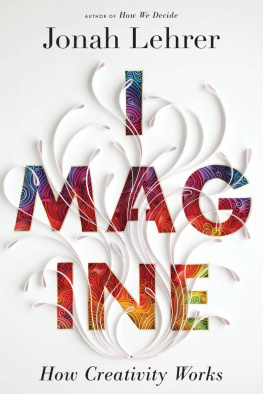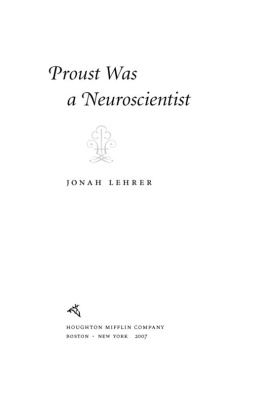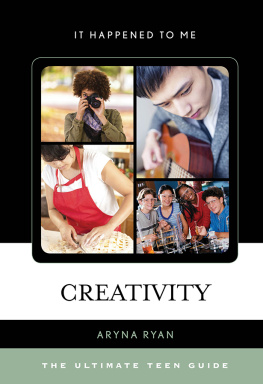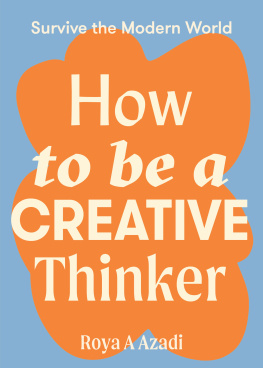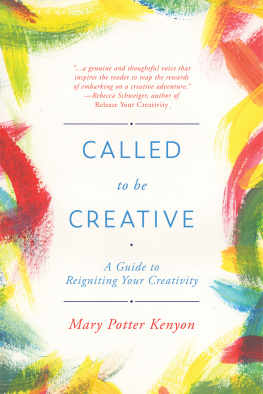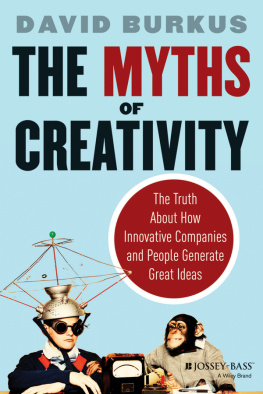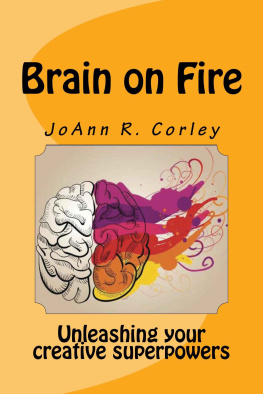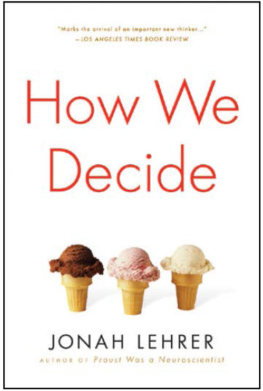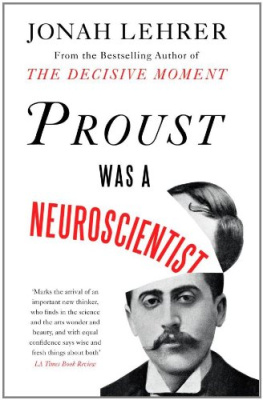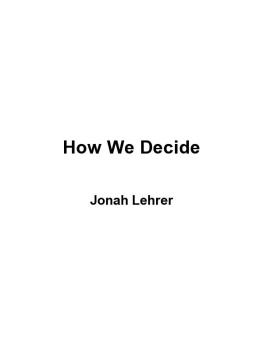Hell is a place where nothing connects with nothing.
T. S. Eliot, Introduction to Dantes Inferno
ACKNOWLEDGMENTS
The cover of this book is a fib. Youll find my name there but no one elses, which makes it seem as if these words were written in splendid isolation or that I didnt benefi t from the essential input of so many other people. But I did! This book would not exist without their time, generosity, and wisdom.
Let me begin with Amanda Cook. At this point, Im running out of praise. Amanda has been my editor on all three of my books, and though shes certainly tired of my plodding and swollen drafts, Im sticking to her like glue. (Preferably one of those really strong 3M glues that hold together golf clubs.) Because Amanda doesnt just fix my broken prose she helps me think through ideas and stories, helps me figure out what, exactly, I want to say. Shes both encouraging and brutally honest, adept at inspiring me to keep on going even as she points out all the wrong places Ive gone so far.
Every single page of this book has been dramatically improved by her red pen.
Ive also benefited from the feedback of many friends and colleagues. Robert Krulwich has always been a hero of mine, but hes also a great reader. After looking at an early draft, Robert wrote me an e-mail that was so full of insight, it kept me busy for six months. Nick Davies at Canongate made many important suggestions, both micro and macro. Paddy Harrington, Charles Yao, Mark Breitenberg, and Jad Abumrad also provided valuable comments. Mike Dudek at Bruce Mau Design did an incredible job creating the graphics. Tracy Roe, the best copyeditor in the world, fixed so many mistakes in the manuscript that, after first seeing her edit, I was rather mortified. (One day, Tracy, Ill learn how to use apostrophes.) Sections of this book benefited from the expert fixes of editors at the various publications Im lucky to write for.
A huge, huge thanks goes out to Mark Robinson and Adam Rogers at Wired, Leo Carey and Daniel Zalewski at the New Yorker, Mary Turner at Outside, and James Ryerson and Alex Star at the New York Times Magazine.
Various family members suffered through the slog of my rough prose. Ben Lehrer spent countless hours in a caf with me helping me cut unnecessary sentences; Michael Lehrer was the source of much creative inspiration; David Lehrer flagged countless relevant studies; and Rachel Lehrer help me fix some of the hardest narrative problems. My mother, Ariella, has read different incarnations of this book too many times to count. Contra my teenage self, Ive learned shes just about always right, so I better listen.
My wonderful agents at the Wylie Agency have made this writing life possible. Sarah Chalfant encouraged me when this book was nothing but a half-baked conjecture, insisting that I keep going. She has suggested stories and connected me with characters Im so lucky to have her on my side. Andrew Wylies support has, at several crucial junctures, been essential. James Pullen has been a joy to work with.
A C K N O W L E D G M E N T S
Ive also been blessed to share the stories of all the people in this book. My eternal gratitude goes out to everyone who let me ask silly questions, whether it was in the lab or at the movie studio or on a beach in Maui. This book would not exist without their patience and brilliance. Id like to especially thank all the scientists who conduct the research that allows my job to exist. One of my favorite quotes comes from W. H. Auden, who once said that when he found himself in a roomful of scientists, he felt like a shabby curate who has strayed by mistake into a drawing-room full of dukes. I live that feeling every day.
And then theres my wife, Sarah. While writing this book, she put up with my negative moods, frequent reporting trips, and mis-cellaneous obsessions. Im in awe of her kindness and smarts, her willingness to read bad drafts late at night (when she still has her own work to finish) and offer incisive comments on everything from my improper use of apostrophes to my interpretation of Highway 61 Revisited. Shes the best best friend ever.
Rosie! You arrived toward the end of the writing process, and thats probably a good thing, since youre the most lovely and ador-able distraction. I cant wait to see what you become, although Im already certain that youre the best thing Ill ever help create.
INDEX
TK
INTRODUCTION
Procter and Gamble had a problem: it needed a new floor cleaner. In the 1980s, the company had pioneered one lucrative consumer product after another, from pull-up diapers to anti-dandruff shampoo. It had developed color-safe detergent and designed a quilted paper towel that could absorb 85 percent more liquid than other paper towels. These innovations werent lucky accidents: Procter and Gamble was deeply invested in research and development. At the time, the corporation had more scientists on staff than any other company in the world, more PhDs than the faculties of MIT, UC-Berkeley, and Harvard combined.
And yet, despite the best efforts of the chemists in the household-cleaning division, there were no new floor products in the pipeline. The company was still selling the same lemon-scented detergents and cloth mops; consumers were still sweeping up their kitchens using wooden brooms and metal dustpans. The reason for this creative failure was simple: it was extremely difficult to make a stronger floor cleaner that didnt also damage the floor.
Although Procter and Gamble had invested millions of dollars in a new generation of soaps, these products tended to fail during the rigorous testing phase, as they peeled off wood varnishes and irritated delicate skin. The chemists assumed that they had exhausted the chemical possibilities.
Thats when Procter and Gamble decided to try a new approach. The company outsourced its innovation needs to Continuum, a design firm with offices in Boston and Los Angeles.
I think P and G came to us because their scientists were telling them to give up, says Harry West, a leader on the soap team and now Continuums CEO. So they told us to think crazy, to try to come up with something that all those chemists couldnt. But the Continuum designers didnt begin with molecules.
They didnt spend time in the lab worrying about the chemistry of soap. Instead, they visited peoples homes and watched dozens of them engage in the tedious ritual of floor cleaning. The designers took detailed notes on the vacuuming of carpets and the sweeping of kitchens. When the notes werent enough, they set up video cameras in living rooms. This is about the most boring footage you can imagine, West says. Its movies of mopping, for Gods sake. And we had to watch hundreds of hours of it. The videotapes may have been tedious, but they were also essential, since West and his team were trying to observe the act of floor cleaning without any preconceptions. I wanted to forget everything I knew about mops and soaps and brooms, he says. I wanted to look at the problem as if Id just stepped off a spaceship from Mars.
After several months of observation West refers to this as the anthropologist phase the team members had their first insight. It came as they watched a woman clean her mop in the bathtub. Youve got this unwieldy pole, West says. And you are splashing around this filthy water trying to get the dirt out of a mop head thats been expressly designed to attract dirt. Its an extraordinarily unpleasant activity. In fact, when the Continuum team analyzed the videotapes, they found that people spent more time cleaning their mops than they did cleaning the floors; the tool made the task more difficult. Once I realized how bad mopping was, I became quite passionate about floor cleaning, West says. I became convinced that the world didnt need an improved version of the mop. Instead, it needed a total replacement for the mop. Its a hopeless piece of technology.
Next page
